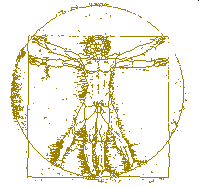The task of natural language understanding from a computational point of view has been notoriously stymied by problems in distinguishing the referents of pronouns and definite descriptions, and grasping relations that hold among propositions themselves. Charniak has demonstrated that no simple-minded syntactic algorithm will work for resolving pronoun reference, since the problems are deeply semantic. Discourse Representation Theory (DR Theory) has had great success in accounting for pronoun reference and definite description in natural language discourse taken in context. DR Theory is an attempt to formalize the constraining effects of context on the interpretation of linguistic discourse. The theory applies techniques from formal attribute grammars (or “semantic grammars”) and formal logic at a level above that of isolated sentences or propositions, to whole discourses and to discourse segments. Nicholas Asher has applied DR Theoretic methods to resolve difficulties in describing and reporting propositional attitudes, particularly belief reports. This paper is an attempt to find the essential connections between the problems of definite description and propositional attitudes.
Briefly summarized, DR Theory interprets a natural language discourse by applying formal grammar techniques to give its discourse representation structure (DRS), or a set of discourse referents and the logical truth conditions imposed on them. The DRS captures the abstract content of the claims made in the discourse. Embedding functions for a DRS pick out objects in the world to correspond to the discourse referents in the URS. By applying a set of embedding functions to a ORS, we attribute the abstract semantics represented by the DRS to the specific individuals identified by the embedding functions to derive the specific content of a discourse segment. The content is represented in terms of the truth conditions that must hold for particular things in the world in order for the propositions in the discourse segment to be true. A each successive discourse segment is interpreted, its truth conditions weave additional familiarity constraints into the growing context.
ER Theory’s emphasis on reducing a discourse to embedding functions and truth conditions gives it a mechanism for dealing with demonstrative direct reference (sometimes called “deictic” reference) and both definite and indefinite description. While a thorough or formal account of this mechanism is beyond the scope of this paper, certain applications of the embedding functions and truth conditions are key to the link between definite description and propositional attitudes.
The simplest type of embedding function maps directly from a reference to its referent: from the word “this” (for example) to some real individual in the world, say the computer screen at which I point while uttering “This is dim”. Propositions employing this kind of direct reference are historically described as de re there is some sense in which the referent itself plays a causal role in one’s belief in a de re proposition. Hans Kamp calls the pair formed by matching a reference marker to its real referent an external anchor.
In the more complex case, and one representing an important achievement of DR Theory, an embedding function goes through a level of indirection before getting from a reference to its referent. In a descriptive noun phrase, for example, a composition of descriptions does not add to a propositions truth conditional content, but rather it puts constraints on the possible referents. Asher variously calls these adequacy conditions, felicity conditions, or familiarity conditions. The conditions imposed by the description pick out a conceptual individual or notional object (as opposed to a real individual). According to Kamp, an indefinite description instructs the interpreter to generate a new conceptual individual meeting the descriptive criteria, whereas a definite description picks out or identifies a conceptual individual that is already familiar to the interpreter. Once created, these conceptual individuals serve as ‘pegs” on which to hang truth—conditional attributions or property ascriptions. These conceptual pegs serve as internal anchors for references.
The distinction between internal and external anchors clarifies two different senses in which propositions can be about the same thing. ‘Two tellers are ... about the same thing in the internal sense if their characterizing DRS’s share the same reference marker. They are ... about the same thing in the external sense if their characterizing DRS’s contain markers that are anchored to the same external object.”
One of Kamps major contributions to DR theory is his observation that the descriptive elements of a definite description serve only to pick out its referent, and not to append conditions to the truth value of the proposition. The constraints, if any, are appended to the familiarity conditions. Consequently, the frustrated politico who complains, “Bob really wants that fool to be elected,’ is not pretending that “Bob wants to elect a fool.’ Rather, the definite description “that fool” communicates familiarity constraints to the listener which serve to pick out the candidate, and the truth conditions of the complaint rest only on whether Bob really wants that candidate to win, not on whether the candidate is a fool, nor on whether Bob believes him to be.
Propositional Attitudes
A propositional attitude is someone’s cognitive state with respect to some proposition. Propositional attitudes include the relations expressed by the verbs “believe”, “disbelieve’, “intend”, “mean”, ‘know”, “be ignorant of”, “expect”, “say”, “see that”, etc. Propositional attitudes have long been a sore spot for philosophical logic, resisting attempts to formalize them. Asher’s proposed extensions to DR Theory make use of Kamp’s weapons for handling definite descriptions to avoid certain attacks that wounded earlier approaches.
Intensionalist Approach
The intensionalist approach to formalizing belief is to treat a proposition as if it were precisely equivalent to its truth conditions. Using the “worlds’ terminology, the content of a statement is identified with the set of possible worlds in which the statement is true. Under this view, since the meaning of a belief is nothing more than the set of worlds in which it is true, all linguistic means of describing the same set of worlds are semantically interchangeable. Consider Kripke’s Pierre, who lives in London and believes it is ugly, but who from childhood has heard of a city called Londres which he believes is pretty. Londres is French for London, but Pierre thinks they are two different cities. By Substitution of Coreferential directly referential expressions, the intensionalst must pretend that Pierre believes London is pretty and London is ugly, but it is intolerable to impute to Pierre a belief in such an explicit contradiction. That London is Londres is an empirical fact, not deducible from anything Pierre knows.
Asher observes that any system of belief reports that is to solve the problem of Substitution of Corererentials must take into account not only the truth conditional content of a belief, but also its internal anchors in the form of familiarity conditions. That is, any true belief report must capture both the content of the belief, and some portion of the way the belief interacts with the rest of the believer cognitive state. It is only by internally anchoring the belief to the context of the believer’s cognitive state that we can rule out the substitution of the believer’s reference markers with other markers that may point to the same real individual but impose different familiarity conditions. For Pierre, London and Londres are distinct referential markers, familiar in different ways.
Representationalist Approach
The representationalist approach is to treat belief as a relation between a believer and a representation. The simplest such view is that belief is a relation between a believer and a sentence, but this view does not capture the sameness of identical beliefs expressed as sentences in different languages (an argument due to Church). A refinement holds that one believes what a sentence means if one stands in a belief relation to any sentence that means the same thing. Now propositions are treated as first class objects, able to stand in propositional relations to one another and to other kinds of objects. This is the requirement underlying what Asher calls the “representationalist’s hypothesis.’ In his wards, “The representationalist’s hypothesis is that to have an attitude like belief toward a proposition is to stand in a corresponding relation to a representation representation.” It is this expressive capability which gives DR Theory the power to model not just actual states—of—affairs, but also cognitive states which themselves model both states—of—affairs and yet other cognitive states. Elsewhere, Asher calls the “representation representation” an attitude Object.
The interchangeability of sentences with the same meaning leaves the representationalist approach vulnerable to specious substitutions of Logically Equivalent expressions. Asher’s solution is to add a structural clause to his test for belief equivalence, demanding that two beliefs be counted as identical only if they share the same internal and external anchors (given certain technical assumptions about clause ordering). Under Asher’s formulation, only a small class of valid simplifying inferences is allowed.
Conclusion
Asher manages to create a theoretical foundation for understanding belief reports by extending Discourse Representation Theory to capture the content or Deliers ana Delier contexts. He avoids the problems of both the Intensionalist and Representationalist approaches by combining them, and by employing distinctions from the DR Theoretic approach to definite descriptions. He rules out Substitution of Coreferentials by counting equal only beliefs that have the same internal anchors. He rules out substitution of Logical Equivalents by adding the requirements that belief structures and external anchors be equal. The strategy rests on interposing a layer of indirection in the mapping from discourse referents to real individuals. The resulting theory provides much needed guidance for computational approaches to natural language understanding and knowledge representation.
Endnotes
Eugene Charniak, “Context and the Reference Problem,” pp. 311-331 in Natural Language, ed. R. Rustin, Algorithmics Press, New York (1972).
Hans Kamp, ‘Context, Thought and Communication,” The Proceedings of the Aristotelian Society, New Series, Vol. LXXXV 1984/1985, p. 253.
Kamp 84/85, p. 253.
Asher, “Belief in Discourse Representation Theory,” Journal of Philosophical Logic, Vol. 15 (1986) pp. 127-189.
Asher, “Semantic Competence Linguistic Understanding and a Theory of Concepts,” Philosophical Studies 1988, p. 3.
N. Asher, “Belief, Acceptance and Belief Reports, in pre—publication form from the files of Prof. Carlota Smith. Previous versions were presented at the 1987 American Philosophi cal Association Pacific Division in San Francisco, and to the University of Alberta at Edmonton Philosophy Club.
Essay
Title
THE RELATION BETWEEN DEFINITE DESCRIPTION AND PROPOSITIONAL ATTITUDES IN DISCOURSE REPRESENTATION THEORY
Synopsis
Explains the relation between Definite Description and Propositional Attitude
Topic
Philosophy of Language
ShortTitle
Discourse Representation Theory
Date
December 10, 1990
Professor
Prof. Carlota Smith
Very well written and clear -- Carlota Smith |
Illustration2
Illustatration1
GraderQuote
Copyright © W. Murray Sexton. All rights reserved.








TM



